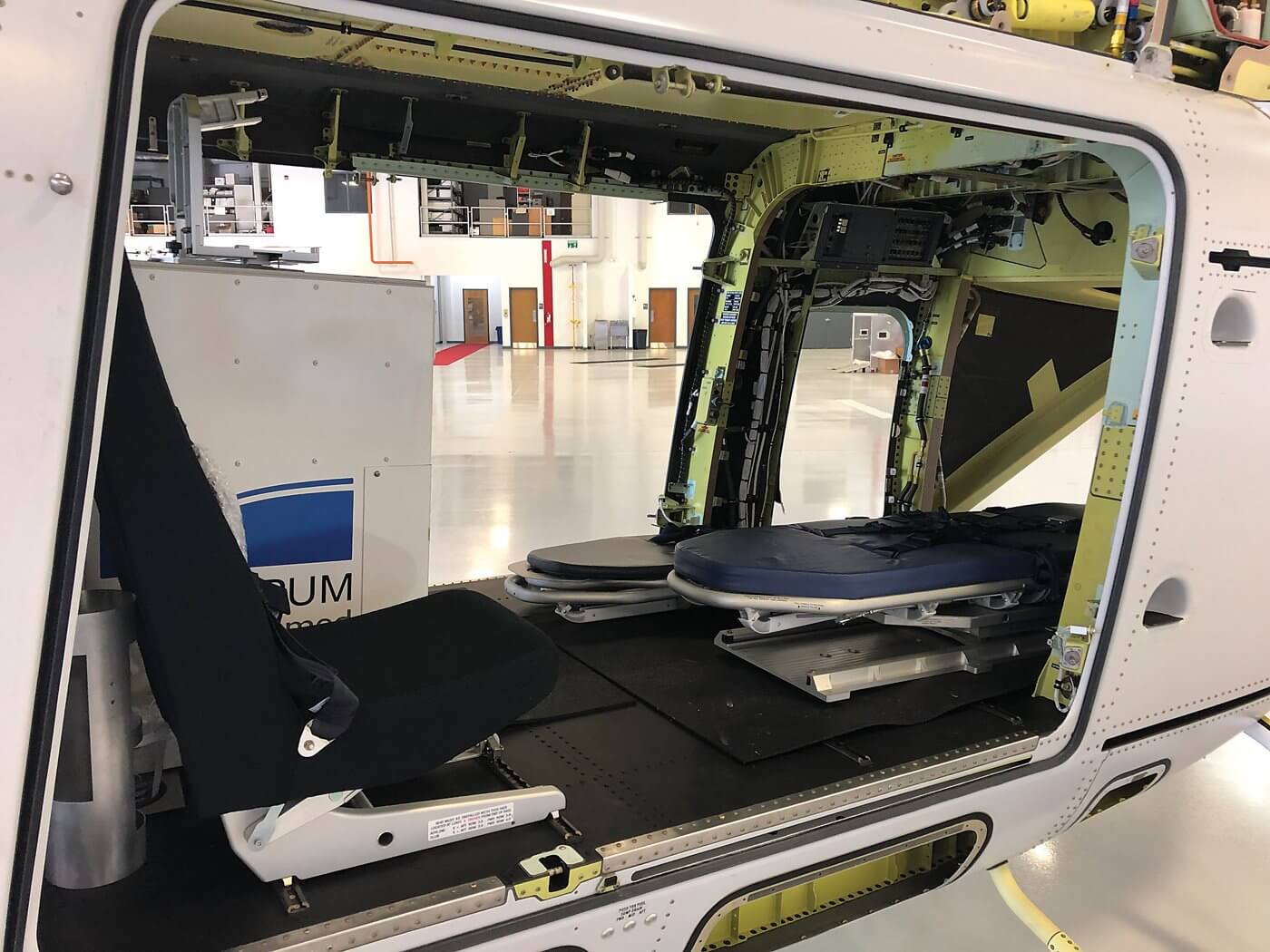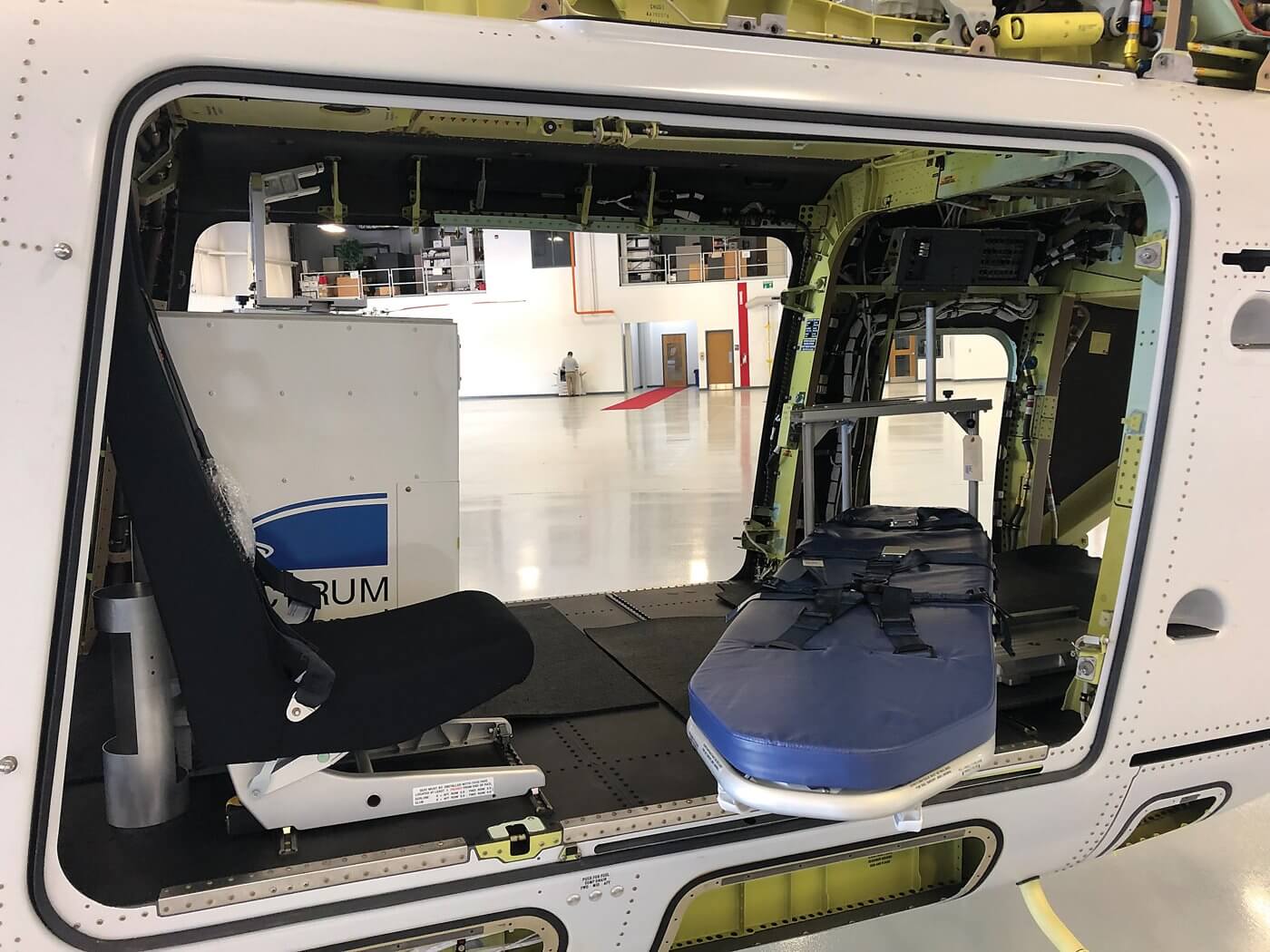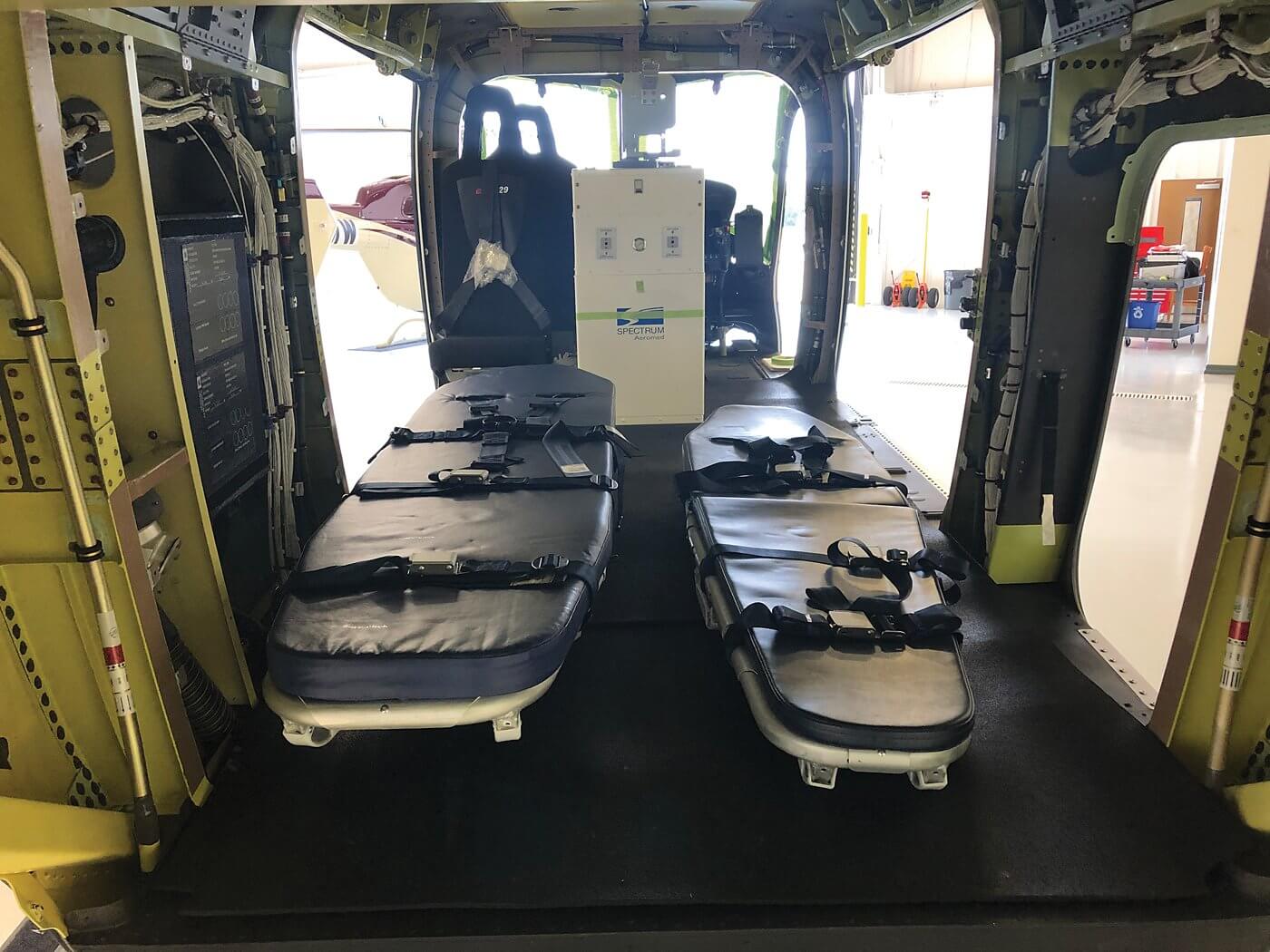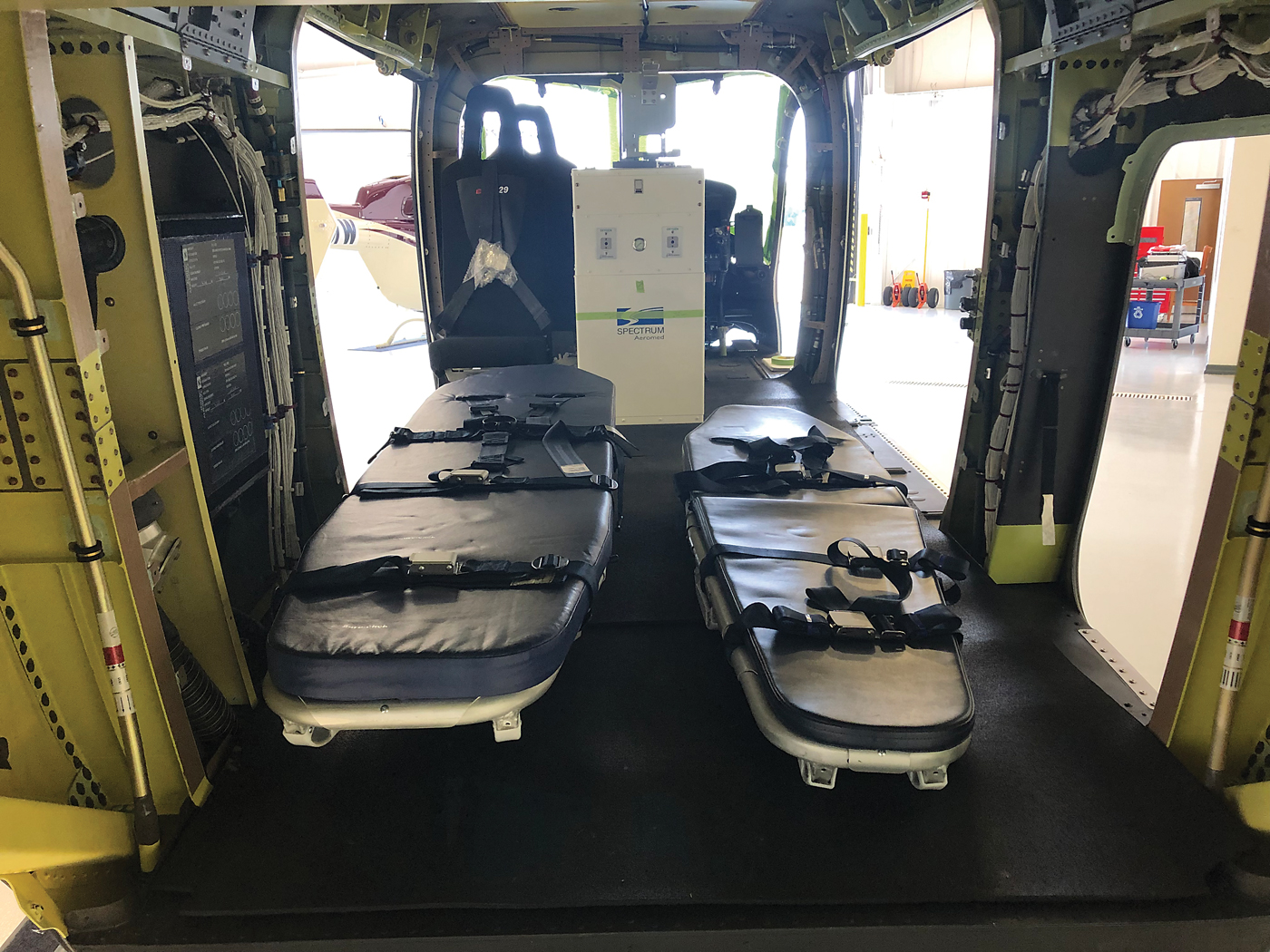Although Spectrum Aeromed had designed a medical interior for the Bell 429 a few years ago, when the opportunity came up to work with Life Flight Network (LFN) on a revised version, it didn’t hesitate to modify its original design to suit LFN’s needs. After all, creating customized emergency medical service (EMS) solutions is one of Spectrum Aeromed’s main strengths.
 Formed in 1991, this multi-award-winning North Dakota company has designed medical interiors and equipment for all kinds and sizes of aircraft–everything from light, single-engine helicopters right up to jet airliners. Most of these products are designed to fit several different aircraft. However, the company often combines a number of them, along with its engineering ability, technical know-how and customer service commitment, to create a unique solution for a specific client’s needs.
Formed in 1991, this multi-award-winning North Dakota company has designed medical interiors and equipment for all kinds and sizes of aircraft–everything from light, single-engine helicopters right up to jet airliners. Most of these products are designed to fit several different aircraft. However, the company often combines a number of them, along with its engineering ability, technical know-how and customer service commitment, to create a unique solution for a specific client’s needs.
“We believe in taking the time to talk to the customer and find out what their mission needs are and what they really want from their air medical solution,” said Matthew Christenson, Spectrum Aeromed’s vice-president and account executive for the Western United States and international customers.
When it came to LFN–which serves the northwestern U.S. and parts of Alaska–this EMS operator liked Spectrum Aeromed’s existing Bell 429 interior concept but wanted some changes that fit its specific requirements.
“The interior they need will have a single Pivot Stretcher, forward medical cabinet with a liquid oxygen 10-liter orb, medical pivoting seat, ceiling valance, medical lighting and a floor protection kit,” said Christenson.
The Pivot/Articulating Stretcher and base deck, medical swivel seat, and medical mounts are established designs, while the floor adapter attachment is an update to an existing product. The other items–ceiling valance, electrical kit, floor protection kit and medical cabinet–for Spectrum’s Bell 429 EMS interior solution are all new designs. Each component provides a host of benefits, but the stretcher and base deck are the focal point from which the solution starts.
Through its base deck, the Pivot Stretcher can rotate and extend outside the aircraft and be locked in multiple positions. Among the benefits this provides are more-effortless loading and handling of the patient and better, safer access to the patient in flight. With the Pivot Stretcher, up to three medical seats can be in the cabin, including one that rotates toward the patient. (A dual-stretcher version is also available.)
A Stretcher Bridge can secure medical equipment needed for specific missions. Alternatively, an Infant Transport Deck can replace the stretcher for neonate missions.
 Additional devices can be secured atop the medical cabinet, which has lockable drawers for drugs and medications.
Additional devices can be secured atop the medical cabinet, which has lockable drawers for drugs and medications.
“This Bell 429 interior solution won’t be limited to any one HEMS [helicopter EMS] provider or style,” said Christenson. “This should hold some nice versatility that others would be able to utilize with no modifications. If they do need modifications, that will also be easy enough to capture and provide with an STC [supplemental type certificate] upgrade.”
Spectrum will send the interior kits to Bell later this year. Bell will then perform the installation and deliver the helicopters to LFN.
For operators with different fleet considerations, Spectrum has one current and three upcoming STCs for air medical interior solutions that might be of interest.
The currently available new STC is a Dual-Patient solution the company created for the Leonardo AW139. “This new design allows an operator to transport two patients and four medical personnel,” said Ricky Reno, VP and account executive for the Eastern U.S. and U.S. military and government initiatives. “This affordable, quick-change solution gives utility, offshore and multi-mission operators the ability to transport up to two patients with no aircraft modifications needed.”
The AW139 Dual-Patient solution features a floor adapter and a stretcher lock. It also uses the 1201-001 stretcher from the 2800 Series System that is popular with fixed-wing operators, “which makes patient transfers safer and easier,” said Reno. An optional Medical Rack with Pneumatics provides a place to mount carry-on medical equipment, oxygen and electrical outlets.
The first STC in development is for the Pilatus PC-24 light jet. At the end of 2019, Spectrum confirmed it had a launch customer, who would now be driving the project forward.
 The second upcoming STC is for the Embraer Phenom 300 light jet. “We have the STC number, and the design and equipment are complete. We are looking for an aircraft to use for the conformity now, so we can finish out the STC process and be ready for a customer.”
The second upcoming STC is for the Embraer Phenom 300 light jet. “We have the STC number, and the design and equipment are complete. We are looking for an aircraft to use for the conformity now, so we can finish out the STC process and be ready for a customer.”
The third STC in development is for the Leonardo AW169. Given the HEMS-focus and growing popularity of this new light-intermediate, twin-engine helicopter, Christenson said Spectrum wants to have its solution completed by the end of 2020, “so we can be an option for Leonardo or [can go] direct to customers.”
Whatever products or solutions Spectrum Aeromed’s clients end up choosing, Christenson said one thing is constant: “The relationship we have with each of them will last for the life of that offering, and hopefully beyond that. Our long-term commitment to each customer ensures they can commit, every day, to saving lives. That’s support for life.”









